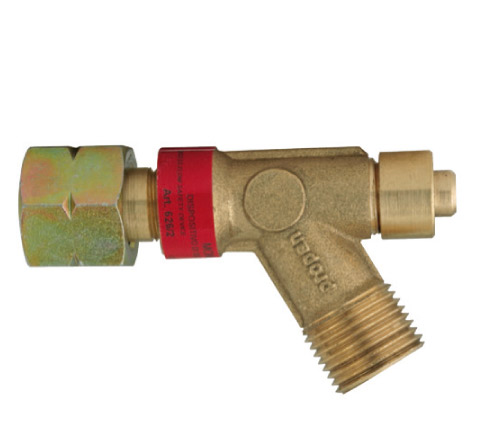Operation and assembly of the safety valves
 The safety valves are components that are able to increase the safety level of a thermo-hydraulic system to prevent that there is an extremely dangerous pressure in the system. In Italy and in Europe the use and installation are defined by the "pressure equipment directive" which specifies that it is necessary to adopt these safety release valves on pressure vessels such as boilers, pressure cookers and pipes. In the United States, on the other hand, the reference regulations are "ASME Boiler and Pressure Vessels Code".
The safety valves are components that are able to increase the safety level of a thermo-hydraulic system to prevent that there is an extremely dangerous pressure in the system. In Italy and in Europe the use and installation are defined by the "pressure equipment directive" which specifies that it is necessary to adopt these safety release valves on pressure vessels such as boilers, pressure cookers and pipes. In the United States, on the other hand, the reference regulations are "ASME Boiler and Pressure Vessels Code".
What are the main sectors of application?
Safety valves can cover many uses and have a very wide range of diffusion. The main fields are:- Energy, both for storage and transport;
- Petrochemical;
- Naval;
- Chemical and pharmaceutical industries;
- Oil and gas plants.
Operating principle of safety valves
Generally, safety valves have an inlet connected to the process and a discharge connection that can be opened to the atmosphere or connected to a recovery pipe.The valves have a mouthpiece on the inside with a section that shrinks to the end. It forms a ring on which acts a spring-loaded shutter which can be adjusted by means of a screw with plate located in the upper part of the valve. Both the shutter and the ring surfaces are polished and ground, ensuring an excellent metal-to-metal seal.
When the process exerts its pressure, through the mouthpiece, on the shutter, a force is generated due to the resistant action of the spring. At a certain point, however, the pressure exceeds the resistance force and, therefore, the shutter is forced to rise and the fluid passes radially. There is a downward projection that conveys the fluid at very high speed and causes such a force on the shutter to generate the complete opening of the valve.
If, on the contrary, the pressure drops below a certain level, the valve performs the opposite mechanism and closes.
How are safety valves installed?
The assembly of safety valves can be done either horizontally or vertically. The important thing is to avoid placing them upside down, to avoid an accumulation of impurities that could damage the sealing plate over time. Furthermore, there must not be any interception valves between the safety valve and the device to be protected.Another important rule concerns the discharge pipe:
- It must not interfere with the regular operation of the valve;
- The diameter must be at least equal to that of the outlet fitting.
The maintenance of the safety valves
Safety valves must be checked periodically to make sure they are working properly. For this reason, sometimes, there is a lever that allows to control the locking but is not able to provide information on the calibration.
For these reasons, the valves must be disassembled and checked on calibration benches, checking by applying an increasing pressure of air.19/08/2019
I contenuti di questo sito non hanno carattere di periodicità e non rappresentano 'prodotto editoriale'.








